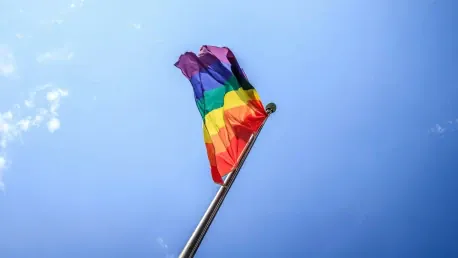In landmark fashion, the newly revised Title IX regulations mark a significant shift in the legal framework governing educational institutions—a shift that embraces a broadened scope of protection to encompass the rights of LGBTQ+ students. By molding the guidelines to recognize and address discrimination on the basis of gender identity and sexual orientation, these modifications are set to reshape the educational environment. In light of these changes, schools, policymakers, and advocacy groups are evaluating the long-term implications for LGBTQ+ youth. This article probes the evolution of Title IX and its adjusted purview, examining the intersection of evolving federal law, societal values, and education.
The Evolution of Title IX and Inclusion of LGBTQ+ Protections
Originally drafted to dismantle sex-based discrimination and catalyze equality in sports, Title IX has evolved substantially since its 1972 inception. It now encapsulates a more expansive notion of discrimination that includes the varied experiences of LGBTQ+ individuals. The current iteration of Title IX policies is shaped by President Biden’s directive and the seismic impact of the Bostock v. Clayton County Supreme Court ruling. These compelled a reexamination of Title IX, culminating in regulations that are reflective of today’s recognition of gender diversity and the necessity for inclusive protections within educational institutions.This transition is not only reflective of a legal shift but also signals an acknowledgment of societal progress and a commitment by law to foster an educational space that is equitable and nurturing for all, regardless of gender identity or sexual orientation. This inclusivity in policy contrasts starkly with the original, narrow scope of the law, demonstrating how federal regulations can adapt in the wake of heightened awareness of gender diversity.
Understanding the Updated Title IX Regulations
Delving into the “Final Title IX Regulations” reveals the Department of Education’s mission to establish a comprehensive framework that explicitly protects LGBTQ+ students. The regulations now permit these students to lodge claims of discrimination with legal backing—an empowering advancement that previously eluded many within the LGBTQ+ community. Instances such as being excluded from activities because of one’s sexual orientation or gender identity can now be rightfully contested under the revised Title IX mandates.With the introduction of these regulations, a significant stride has been made toward curbing discriminatory practices, thereby enabling LGBTQ+ students to pursue educational and extracurricular endeavors without fear of bias or exclusion. These refined rules signify a paradigm shift in how discrimination claims can be brought forward, enhancing the ability of marginalized students to seek recourse and justice.
The Complex Issue of Transgender Students in Sports
While the updated regulations have ushered in an era of inclusivity, they stop short of setting forth comprehensive guidelines pertaining to transgender athletes’ participation in school sports. This point of contention lingers, with the Department of Education deferring the issue to a separate future proposal, following an outpouring of public feedback. Nevertheless, the Education Department has sought to prevent outright bans on transgender students from competing in line with their gender identity, illustrating a commitment to balancing equity with the practicalities of sports participation.The absence of clear-cut rules within the regulations points to the sensitive and divisive nature of this topic. How schools and sporting bodies should integrate transgender athletes remains a hotly debated subject, leading the Department to handle this matter with a distinct and measured approach, demonstrating the difficulties inherent in reconciling inclusion with competitive fairness.
State Resistance and the Battle Over Federal Authority
Several states stand in overt rebellion against the federal government’s expanded interpretation of Title IX, with some readying themselves for legal confrontations. State officials have voiced their intent to disregard the new mandates, urging educational systems within their jurisdictions to maintain the status quo. This state resistance illuminates the tension between local governance and federal directives, posing a challenge for schools caught in the crossfire.The Education Department holds firmly that Title IX’s federal stature overrides conflicting state laws—a stance that may compel adherence. However, the prospect of prolonged legal battles with states serves as a cautionary tale of the friction that can arise when federal innovations confront entrenched state policies.
Divisions and Debates on LGBTQ+ Rights
The updated Title IX regulations have catalyzed divergent reactions, underscoring the societal divide on LGBTQ+ rights in America. While lauded by civil rights groups as a move toward comprehensive equity, the amendments have ignited concerns that they could deviate from or compromise Title IX’s original intent, especially regarding sports. Critics argue that these changes, while well-intentioned, may skew the balance of fair competition that Title IX once championed.This discord reflects the complexity of integrating expanded rights into existing frameworks without diminishing their original objectives. These debates are set to persist as each facet of the revised Title IX is scrutinized and contested by different segments of the population, highlighting the challenges that accompany significant policy changes.
Looking Toward the Future: Inclusivity and Legal Challenges
The updated Title IX regulations represent a pivotal turn in how educational institutions handle discrimination, notably extending safeguards to include LGBTQ+ students’ rights. The revisions are reflective of a regulatory adaptation to encompass gender identity and sexual orientation discrimination, a move anticipated to significantly transform school experiences for LGBTQ+ students. Educational bodies, legislative decision-makers, and LGBTQ+ advocacy organizations are now assessing how these regulatory changes will influence future policy and the everyday life of LGBTQ+ youth.These adjustments to Title IX underscore a response to evolving societal norms and a commitment to a more inclusive approach to education. As the legal landscape shifts to become more inclusive, the implications for LGBTQ+ students and the institutions that serve them are profound, offering a more equitable and just educational system. The redefinition of protections under Title IX is a milestone moment, indicative of progress in civil rights as it relates to education, signaling a broader federal acknowledgment of the variety of discrimination students may face.








